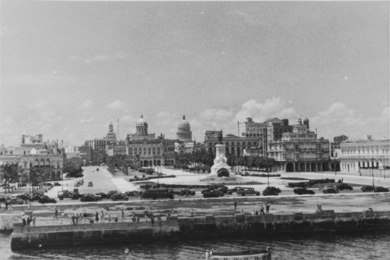Cuba
The Caribbean country of Cuba accepted 6,000 to 8,000 refugees from Europe before it entered the war in 1941. Most of them were Jews. Almost all who sought refuge in Cuba were waiting for an onward journey to the USA. Foreigners in Cuba were subject to strict entry and residence conditions. Only those who could provide proof of financial liquidity received visas. Otherwise the only option was a tourist or transit visa. Work opportunities were also severely restricted, as vacant positions could only be filled by locals from 1933 onward. There were few cultural or political organisations for exiles, while the Communist committee Free Germany, which established offices throughout Latin America, played only a minor role.
Moreover refugees were not entirely welcome: after the St. Louis set off for Havana in May 1939 with around 930 Jewish refugees from Hamburg on board, the Cuban government declared the passengers’ papers invalid. The ship was barred from entry into the port of Havana. After the US government refused to take the refugees the St. Louis was forced to return to Europe. Most of the refugees made it to the UK, France or the Netherlands. After 1940 many were victims of Nazi persecution. After 1945 most of the exiles who had not yet left Cuba departed, with Palestine their favoured destination.
Further reading:
Krohn, Claus-Dieter (Hg.): Handbuch der deutschsprachigen Emigration 1933 – 1945. Darmstadt: Primus-Verlag 1998
Stiftung Jüdisches Museum Berlin (Hg.): Heimat und Exil: Emigration der deutschen Juden nach 1933, 1. Aufl.. Frankfurt am Main: Jüdischer Verlag im Suhrkamp Verl. 2006


